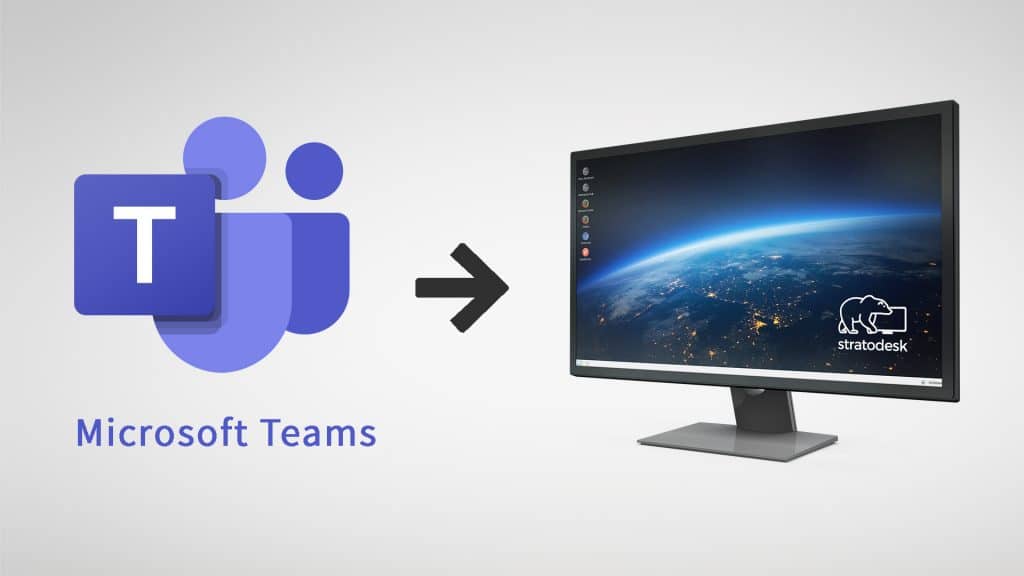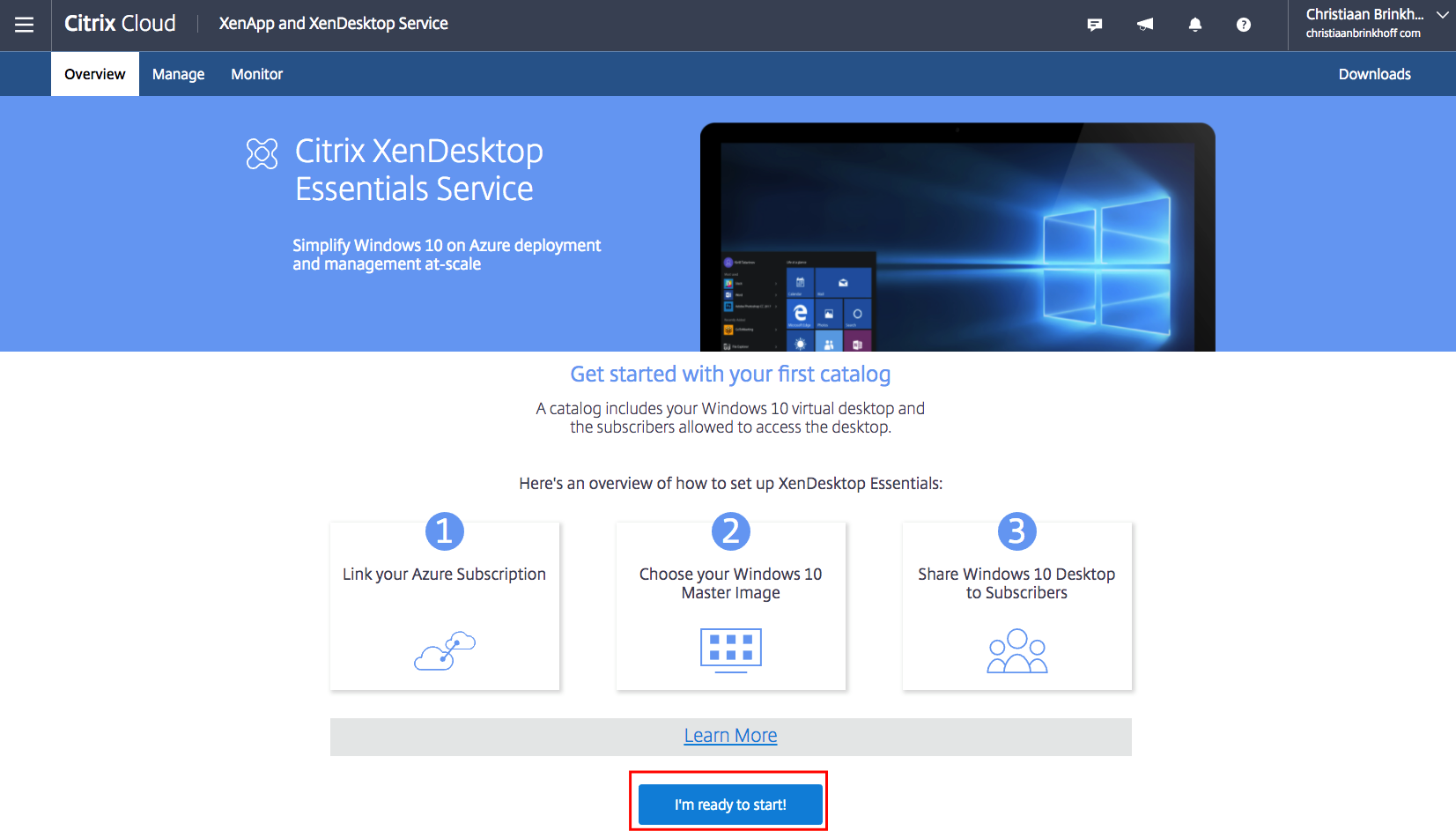Citrix Virtual Apps and Desktops makes VDI intuitive and affordable and ensures that users have access to the apps they need to remain productive within today’s digital workspaces. Alongside Citrix Workspace, it can ensure the best possible VDI experience within the context of complex multi-device, multi-app workflows. This Quick Start leverages the Citrix Virtual Apps and Desktops service, which is delivered as an evergreen managed service from Citrix Cloud. For this Quick Start script to function, you will need either an active trial or a paid subscription to the Citrix Virtual Apps and Desktops service. This service is licensed on a per-user, per-month basis.
What is Windows Virtual Desktop?
Windows Virtual Desktop (WVD) is a cloud-based solution for application virtualization. Using WVD on Azure enables you to:
- Configure a fully scalable Windows 10 multi-session deployment
- Run and optimize Microsoft 365 enterprise applications in virtual multi-user scenarios
- Get free extended security updates for Windows 7 virtual desktops
- Deploy existing desktop services (RDS), as well as Windows Server desktops on any computer.
- Centralize the management of applications and desktop running with Windows 10, Windows Server.
What is Citrix Virtual Apps & Desktops?
- Citrix Virtual Apps and Desktop is a solution for virtualization, which provides access to desktops from all devices while providing IT control and visibility over virtual machines (VMs), applications, security, and licenses.You can leverage Citrix Virtual Apps and Desktops to:
- Run applications and desktops separately from the operating system and device interface.
- Allow administrators to perform network management and control access from user devices.
- Enable administrators to manage a large number of virtualized desktops from a central data center.
Citrix Virtual Apps and Desktops is based on the Flexcast Management Architecture (FMA). The main features of FMA are integrated provisioning and the ability to run multiple versions of Citrix Virtual Apps or Citrix Virtual Desktops in a single location.

Windows Virtual Desktop vs Citrix
Let’s compare Windows Virtual Desktop vs Citrix Virtual Apps and Desktops across several key dimensions: system requirements, cost efficiency, accessibility for small to medium businesses, and administration experience required.
System Requirements

Windows Virtual Desktop
To run WVD on Azure, you need to use a supported operating system (OS) and use the required license. Supported operating systems for WVD on Azure are either Windows 10 Enterprise multi-session, Windows 10 Enterprise, or Windows 7 Enterprise. These operating systems should be accompanied by an appropriate licence.
An Office 365 licence includes plans for Enterprise 3, Enterprise 5, Academic 3, Academic 5, Firstline Workers 3, or Business Premium. A Windows license comes as either Enterprise 3, Enterprise 5, Academic 3, or Academic 5. If you are using Windows Server 2012 R2, 2016, or 2019, the required licence is RDS Client Access License (CAL).
To support Windows Virtual Desktop, your infrastructure must meet certain requirements. The first must-have is an Azure Active Directory that is synchronized with Windows Server Active Directory. You can set this up using either Azure AD Connect or Azure AD Domain Services.
Additionally, you need to connect your Azure subscription with Windows Server Active Directory. Lastly, any Azure VMs you create for WVDs must run on supported images and use either “standard domain-joined” or “Hybrid AD-joined” options.
Citrix
Citrix has specific requirements for machine images, operating systems, and any other software required on the machine for different components of the desktop virtualization platform.
In general, all core components, including StoreFront, located on one server and used for evaluation, require a minimum of 5 GB RAM hardware. If your core components and StoreFront are needed for testing deployment or are used as a small production environment, you will need to reach a minimum of 12 GB RAM hardware.
In addition to general hardware requirements, certain Citrix components should be run using specific operating systems. Citrix Delivery Controller, for example, requires the minimum 5 GB RAM, but also needs 800 MB hard disk. The controller works with either Windows Server 2019 or 2016 (Standard and Datacenter Editions).
If you’re using Citrix Studio, you need a minimum of 1 GB RAM, as well as 100 MB hard disk, and the supported operating systems are Windows Server 2019 or 2016 (Standard or Datacenter Editions) and Windows 10 (64-bit only).
To run Citrix Director, you need a minimum of 2 GB RAM and 200 MB hard disk, and the supported OSs are Windows Server 2019 or 2016 (Standard or Datacenter Editions).
Citrix StoreFront requires 2 GB RAM of hardware and supports Windows Server 2019 or 2016 (Standard and Datacenter Editions) and Windows Server 2012 R2 (Standard and Datacenter Editions). Citrix License Server also needs a minimum of 2 GB RAM.
Additional software requirements:
- If Microsoft .NET Framework 4.8 (or higher) is not installed, it will be installed automatically.
- Microsoft Management Console 3.0 (included in all supported operating systems).
- Windows PowerShell 3.0 or higher.
There are more software requirements for specific components, as you can see in the official system requirements.
Cost Efficiency
One of the biggest differences between Citrix and Windows Virtual Desktop is cost. WVD was designed as a low-cost solution for smaller businesses.
Windows Virtual Desktop
Vdi App
For 100 multi-session desktops with Office on WVD, Azure estimates a total monthly cost of $11,615.26 (see the official pricing page). This includes Office license costs, compute costs, and expected bandwidth for standard knowledge workers. It does not include consulting or implementation costs, which are minimal because WVD is a fully managed service.
Citrix
The starting price of Citrix Virtual Apps & Desktops is $12 per month per user – only $1,200 for 100 desktops. But this does not include license costs or the on-premises infrastructure required. For a comparative setup you’ll need 100 Office Pro Plus licenses, you must set up several local Windows Server machines, and deploy Citrix components on them. You must consider hardware costs and ongoing maintenance costs. In addition, typically you will need consulting services and ongoing support services from Citrix, which also increase the cost of an enterprise deployment.
Accessibility for Small to Medium Businesses
Compared to Citrix, Windows Virtual Desktop is easier to use for small businesses. While Citrix has many advanced features, the cost of implementation and maintenance is high. However, not all businesses (especially small ones) need or want to pay for these capabilities. WVD offers faster and more affordable setup without requiring advanced IT expertise.
Administration Experience
With Microsoft Windows Virtual Desktop, IT administrators can manage their infrastructure in the cloud, with no need to go to or connect remotely to a server room. WVD lets you manage all Microsoft 365 apps, desktops, business applications, security functions and profiles in one web interface. To gain additional capabilities offered by Citrix, you can add Citrix on top of WVD (see the following section).
Security
Citrix provides extensive enterprise security features, including FIPS compliance, Common Criteria certification, Microsoft Credential Guard compliance, multi-factor authentication, smart card integration, ICA proxy, and more. However, WVD provides adequate security measures based on the strong security features of the Azure cloud.
Windows Virtual Desktop
Includes security features like Reverse Connect, a secure virtualization control plane, security for physical hosts, the physical network, and the physical datacenter. However, Azure emphasizes customers need to take responsibility for identity and access management, user device protection, application security, session host operating system security, correct deployment configuration, and network controls.
Citrix
Citrix provides analytics that helps reveal unusual behavior or malicious access to desktops. You can apply Citrix Policies to enable or disable any functionality, and limit application access based on context with Citrix Cloud. Citrix provides a Secure Browser for locked-down access to specific SaaS applications.
User Desktop Experience
What users see on Citrix and Windows Virtual Desktops is completely different.
Windows Virtual Desktop
WVD provides a standard Windows 10 desktop experience. In terms of usability, this is very useful for users who are already familiar with Windows 10.
Citrix
In Citrix, users are presented with a Windows Server operating system. For users acquainted to Windows 10, this is a different experience which can cause challenges for some users. It is possible to configure Windows 10 desktops on Citrix, but this might incur extra costs.
Combining WVD with Citrix
WVD itself is an ideal choice for many businesses (especially startups and small businesses). For large businesses, Citrix can extend Microsoft’s WVD, offering a management layer that increases flexibility, security and optimizes costs.
The combination of WVD and Citrix offers the following advantages:
Citrix Workspace Vdi Windows 10
- Optimization packs for Microsoft Teams and Skype for Business—provides a good audio-visual experience for Microsoft Teams and Skype for Business.
- Hybrid Cloud Model—WVD can only run Windows 10 workloads in multiple sessions on Azure. Citrix provides the ability to also run existing RDSH workloads, either on-premises, on Azure, on any other cloud, or on HCI solutions like Nutanix.
- Citrix HDX—an improved remoting protocol.
- Citrix Machine Creation Services (MCS)—provides a hypervisor API that enables quick generation of VMs with minimal infrastructure utilization.
- AutoScale—quickly adds or removes workloads as needed, with “vertical load balancing” which balances the number of user sessions on a single machine until optimal performance is reached, improving utilization and reducing the number of servers needed.
- App Layering—this Citrix capability significantly reduces management time for Windows images and applications. It separates the applications from the management infrastructure and the operating system. It lets you install each application and operating system patch only once, then update the appropriate template and reload the image.
- App Protection—this Citrix feature improves security when using public resources on virtual desktops and Citrix applications.
- Session Recording—lets users record screen activity during VDA-hosted user sessions for any connection type, in accordance with company policies.
- Citrix Analytics—security and performance analysis leveraging AI, which can help identify and resolve issues and anomalies.
- Citrix SD-WAN—Citrix SD-WAN is a next-generation WAN solution that provides better security, and an improved application environment for SaaS, cloud, virtual applications and desktops.
- Multi-factor authentication (MFA)—Citrix integrates with third-party MFA providers, including Okta, OAuth, and RADIUS.
Addressing DaaS Challenges with Hysolate Isolated Workspace as a Service
DaaS is a great solution for delivering a desktop experience in the cloud, but is far from perfect. When users work remotely, especially in low bandwidth environments, user experience is lacking, especially when running intensive workloads. Users cannot use desktops offline, and there is still management overhead, although less than in an on-premise VDI deployment.
Another factor to consider is the pricing of these solutions. Hosting desktops and storage in the cloud requires a large infrastructure investment from the DaaS vendor, which is passed on to organizational users, creating a heavy, ongoing OpEx expense.
Hysolate solves these problems with an innovative approach called isolated workspace as a service (IWaaS). Users get a local isolated operating system running on their machine deployed within minutes and managed from the cloud.
Isolated workspaces enable:
- A higher level of freedom on employees corporate devices
- Ability to receive 3rd party generated content in an isolated zone
- Access to IT admins, DevOps, developers, and other privileged users in their everyday environment
- Access to employees from personal, unmanaged devices

The behavior of the workspace is managed in the cloud, while all of the computing resources run locally on user machines.
This eliminates the need to invest in a large and costly infrastructure, and provides a better local user experience, with offline availability.
